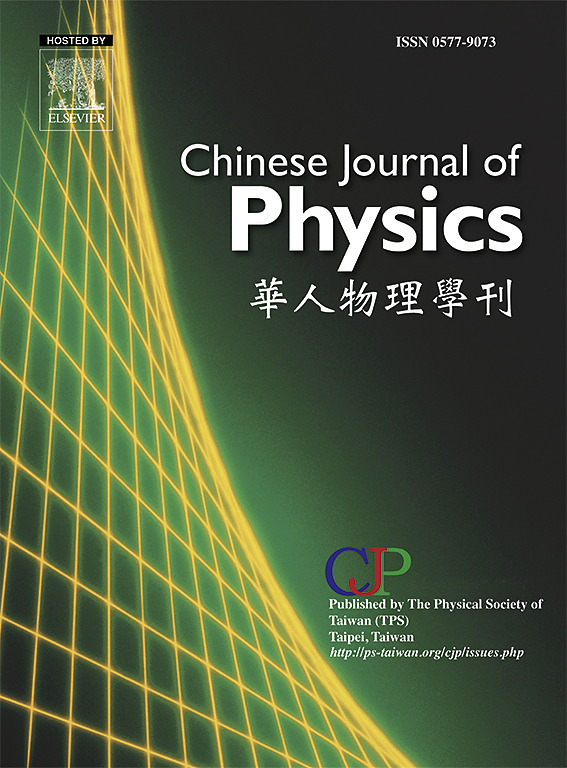Violation of Svetlichny’s inequality in a system of spins j
IF 4.6
2区 物理与天体物理
Q1 PHYSICS, MULTIDISCIPLINARY
引用次数: 0
Abstract
Quantum multi-particle correlations are one of the most intriguing properties of quantum entanglement, arising from collective entangled states of multiple particles. Svetlichny’s inequality (SI) was the first method proposed to test the existence of such correlations. Previous studies have primarily focused on -spin particle systems. In this paper, we present a unified scheme that enables the violation of SI in arbitrary non-zero spin particle systems. Specifically, for all fermion systems, our scheme achieves the maximal quantum violation of SI for any number of particles. For boson systems, when the particle spin , our scheme consistently realizes the violation of SI for any number of particles. When the particle spin , our scheme can yield SI violation for up to 7 particles. Furthermore, as the particle spin approaches infinity, our scheme achieves the maximal quantum violation of SI. To obtain these results, we also prove that the upper bound of Svetlichny’s operator within the framework of local hidden variable theory is . These findings not only enhance our understanding of quantum correlations across various particle systems but also provide valuable insights for the development of quantum communication protocols that utilize entanglement and non-locality in multi-particle configurations.

自旋系统j中Svetlichny不等式的违反
量子多粒子相关是量子纠缠最有趣的特性之一,它产生于多个粒子的集体纠缠态。Svetlichny不等式(SI)是第一个用来检验这种相关性是否存在的方法。以前的研究主要集中在1/2自旋粒子系统上。在本文中,我们提出了一个统一的方案,使任意非零自旋粒子系统的SI违背成为可能。具体地说,对于所有费米子系统,我们的方案实现了任意数量粒子的最大量子违反SI。对于玻色子系统,当粒子自旋j≥2时,我们的方案一致地实现了任意数量粒子的SI违背。当粒子自旋j=1时,我们的方案可以产生多达7个粒子的SI违背。此外,当粒子自旋j接近无穷大时,我们的方案实现了SI的最大量子违反。为了得到这些结果,我们还证明了局部隐变量理论框架内Svetlichny算子的上界为2N+1。这些发现不仅增强了我们对各种粒子系统之间量子相关性的理解,而且为在多粒子配置中利用纠缠和非局域性的量子通信协议的发展提供了有价值的见解。
本文章由计算机程序翻译,如有差异,请以英文原文为准。
求助全文
约1分钟内获得全文
求助全文
来源期刊

Chinese Journal of Physics
物理-物理:综合
CiteScore
8.50
自引率
10.00%
发文量
361
审稿时长
44 days
期刊介绍:
The Chinese Journal of Physics publishes important advances in various branches in physics, including statistical and biophysical physics, condensed matter physics, atomic/molecular physics, optics, particle physics and nuclear physics.
The editors welcome manuscripts on:
-General Physics: Statistical and Quantum Mechanics, etc.-
Gravitation and Astrophysics-
Elementary Particles and Fields-
Nuclear Physics-
Atomic, Molecular, and Optical Physics-
Quantum Information and Quantum Computation-
Fluid Dynamics, Nonlinear Dynamics, Chaos, and Complex Networks-
Plasma and Beam Physics-
Condensed Matter: Structure, etc.-
Condensed Matter: Electronic Properties, etc.-
Polymer, Soft Matter, Biological, and Interdisciplinary Physics.
CJP publishes regular research papers, feature articles and review papers.
 求助内容:
求助内容: 应助结果提醒方式:
应助结果提醒方式:


